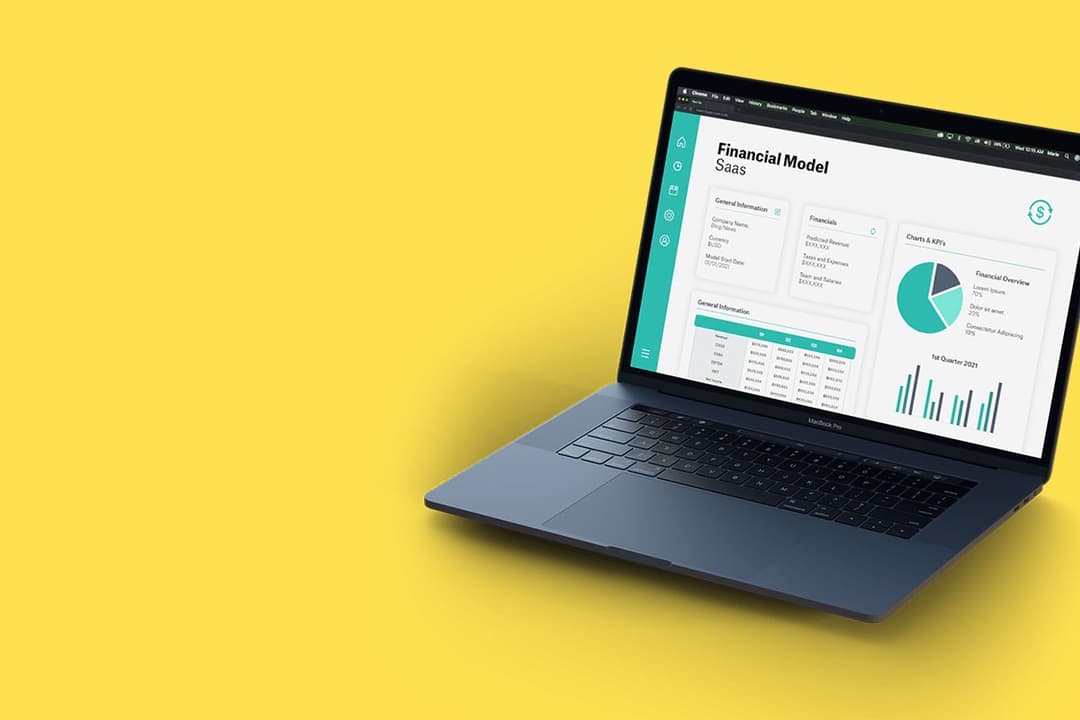Burgers are a staple in the Western world. People eat millions every year, from the cheap, fast-food option to expensive, gourmet editions.
And vegetarian alternatives have existed for a long time. But as more evidence piles on, everything from how much water it consumes and how much land it requires, the future of meat consumption seems to be coming to an end.
Two companies want to create a vegan option that's just as good as the real thing. This battle, however, is much more than just a burger patty. It's controversies, big names, and questionable products. So, let's take a look at the duel between Beyond Meat vs. Impossible Foods in this episode of Forensics.
Origins
The rivals share a lot in common. Both founders are vegan, and they both wanted to create the best vegan burger out there. Oh, and they have the same last name, so we'll call them Pat and Ethan.
In 2009, biochemist Pat Brown took an 18-month sabbatical to see how he could change meat consumption, which, the numbers showed, is devastating the planet. The meat industry uses 26% of the land on Earth just for animal grazing, and 33% of crops in the world feed those animals.
With numbers like these, Pat was convinced: our planet needed a breather. But, given his background, his first approach was very academic, which led to very little success. After trial and error, he realized he needed a different approach, as he told PS Magazine.
"All you have to do is make a product that the current consumers of meat and dairy prefer to what they're getting now. It's easier to change people's behavior than to change their minds."
This is eerily similar to what Ethan Brown wanted to do. The former fuel-cell expert quit his job in the green tech industry and decided to start his own vegan meat products because, well, he missed burgers. Which should be enough motivation for anybody to change the world.
Though he was involved in the green tech industry, he wasn't a food scientist, so he contacted two scientists, Fu-hung Hsieh and Harold Huff, interested in working with them. These two had been working for years in creating a chicken-free strip that tasted just like chicken.
In 2009, the three partnered up and began finetuning their recipes, but it took them years and, their first product wasn't even been. It was the Chicken-free strips, which they released in 2012.
From the start, Ethan faced a lot of backlash for his idea. Many thought he was crazy: back then, no vegan patty came close to resembling beef. But, Ethan knew this was bigger than a burger. It was, in fact, beyond meat.
He wanted to improve people's health, eliminate animal cruelty, reduce carbon emissions, and disrupt the current, unsustainable food system. This is quite a vision so remember these promises.
Two approaches to the same product:
Pat founded Impossible Foods in 2011, and quickly, he and his team of scientists found that beef had one particular ingredient, essential in giving it its appeal, taste, and texture. The key was iron, and there was one component filled with it: heme. Heme is a substance precursive to hemoglobin, so it sounds like only animals would have it, right?
It turns out some plants have a similar component called leghemoglobin, and soybean, in particular, had high concentrations of it.
So, the scientists at Impossible began combining different plants and components to create their own heme. Eventually, they struck gold with a combination of genetically-engineered yeast and soybean. And this is very important because heme would become the center of the feud.
After finetuning the heme factor, their next challenge was to replicate a burger's chew feeling, mostly due to the amounts of connecting tissue present. For this, they tried wheat, honeydew, melons, and other ingredients until they obtained the most complete vegan patty they could.
Impossible's patty even "bled" due to the heme, giving it a more realistic feel. Ironically, this was also an effect Beyond wanted to replicate. What's the deal with wanting vegan products to bleed? It seems contradictory.
Excluding blood, Beyond took a different path. From the start, Ethan had a clear idea of what he wanted. According to an article in Fast Company, he rejected the idea of using GMOs, gluten, and antibiotics. He was adamant in setting Beyond apart and insisted it'd be a health company.
Beyond relied on ingredients like peas, mung beans, brown rice, coconut oil, beet juice (for the blood), and natural flavors to achieve the perfect patty. They also had an extruding machine ironically called "The Steer." Of course, they don't reveal all the steps in their process, but they have revealed one: Beyond didn't use heme.
Even if both companies took different approaches, their products were luring the eyes of investors.
Markets, big names, and investments
With the right product and a need for money, Pat only had to remind investors that his creation not only was incredible but also a part of a trillion-dollar industry. And it worked. From June 2014 to October 2015, Impossible Foods managed to raise $148 million.
Beyond didn't lag behind. In fact, their first product, the chicken-free strip, had surprised critics. An article on Slate magazine from 2012 said it was so real, it actually freaked vegans out.
And now that same company had come up with a patty. So, the traction and reputation were there to lure in big names like Biz Stone, Twitter's co-founder, and investment firm Kleiner Perkins.
Beyond had investment injections from General Mills, the Human Society, and Tyson Foods. But the biggest was Bill Gates, who, by the way, also invested in Impossible Foods.
Gates had initially invested in Beyond first, after trying their plant-based chicken tacos. He was so convinced, he said in a blog post that: it was the taste of the future of food.
He has repeatedly stated that society needs to change how we eat and feed the masses while also reducing the environmental impact of meat consumption on Earth. Beyond Meat seemed ideal, but when Impossible came out with its burger, Gates was also enticed.
The software billionaire could have a grasp on both of the up-and-coming companies set to change the world.
And the world was taking notice. When it hit the stores in 2016, Beyond was such a hit that stores like Whole Foods ran out of patties. In 2019, the same happened with Impossible in 2019, when the factory couldn't keep up with California's demand.
Beyond's IPO
With both companies growing, there was talk of IPOs. The first to announce its IPO was Beyond in mid-2019. As many times we've seen in this program, it was a hit. The stock opened at $25, with such hype that it flew up to 163% after the launch in a matter of months.
And as the stock was flying high, reaching values of about 235, Bill Gates quietly sold its stock. Perhaps he's seen our show before, or it's because he's Bill Gates.
Whatever the reason, he foresaw Beyond's crash. By December 2019, Beyond's stock was worth $76. Though it saw increments in early 2020, by March, it was worth $58, thanks in part to reduced sales and the generalized health crisis.
The stock would bounce back with adequate performance in September and October 2020. And, Gates might not be done because rumors that Impossible will launch its IPO have surfaced. Look out if he starts to sell.
But let's get past the money and talk about the burgers.
Differences between products
If you're new to this vegan world, you might even have confused the brands. So, let's talk about the main difference between Beyond and Impossible, and that is heme. Impossible uses it; Beyond doesn't.
In fact, Beyond has gone as far as releasing statements to address confusion and mix-ups, all the while making it very clear they don't use the famous component.
But, why would they be so stubborn with these statements? Well, besides brand confusion. It's because heme, at least the way Impossible manufactures it, is controversially genetically modified, known as GMO. So, to differentiate itself, Beyond insists they don't have GMOs and fire some shots at Impossible.
"Beyond Meat does not use GMO ingredients. We believe it is entirely possible to recreate meat directly from plants without GMOs, and we would offer The Beyond Burger as evidence that we're onto something."
Shots fired, indeed.
But, what was Impossible doing all this time? Well, the company has never denied the use of GMOs. They recognize that their yeast is genetically engineered, but they also say it's safety verified.
In a statement to CNBC, Impossible said that the American Medical Association; the World Health Organization; and the National Academy of Sciences, Engineering, and Medicine all agree that GMOs are safe for human consumption.
Which was partly true, and you'll see why. The company even called those who questioned genetic engineering anti-science.
But there was a solid reason for people to question Impossible Foods. In 2017, the FDA warned Impossible that they hadn't proved their heme's safety for consumption. Even with this warning, Impossible moved on with selling the product to the general public.
Warnings included, one person ate an impossible burger and went into anaphylactic shock in 2017.
Impossible did tend to the FDA when they emitted an in-house GRAS report, which stands for Generally Recognized As Safe. In this document, a manufacturer justifies the safety of its product.
It was 1066 pages explaining every aspect of their heme research. In 2018, the FDA replied approvingly, stating they had no further questions regarding Impossible's heme.
So, the FDA deemed the heme as GRAS, but still, some groups were reluctant. The research was all done in-house, after all. But, even with this approval, the controversy wasn't over.
More controversy
The world first took a positive attitude towards both Beyond and Impossible. Burger King and Qdoba sold Impossible. Whole Foods struggled to keep with demand for Beyond Meat. The world loved them. Then it didn't.
The discomfort grew around one promise in specific: the promise of health. Even companies that initially loved the products, such as Chipotle and Whole Foods, admitted that they had jumped the gun. After seeing the numbers, they called both products too processed.
Then, medical reports surfaced that heme consumption was linked to brain damage, carcinogen generation, diabetes, etc. In 2019, the WHO even declared the excessive consumption of heme as unhealthy.
So, while GMOs were safe to eat, according to Impossible, their star GMO, heme, wasn't.
In August of that year, a pressure group released full paged ads criticizing Beyond Meat for their products' chemicals. But this group wasn't vegan; it was actually a beef and pork support group. They attacked the amounts of chemicals compared to, guess what, bacon. You know something isn't right when bacon is a healthy alternative.
When asked about the general backlash, Impossible's founder and CEO, Pat Brown, simply called all those accusations bullshit. He told CNBC that "Our product is substantially better for the consumer than what it replaces."
But were they? Compared to a similar-sized burger patty, Beyond had almost the same numbers in fats, and the vegan option had no cholesterol. But, whereas the beef patty had 77 mg of sodium, Beyond had 390 mg. So, if you like salt and hypertension, you're going to love it.
And Impossible fans shouldn't be celebrating because it had 370 mg of sodium, compared with regular beef. Plus, Impossible had the controversial heme as well.
How about we take Harvard's point of view; they are burgers after all. Any doctor will tell you that you're not supposed to eat a burger every day; the same should apply to these two products.
But we haven't spoken about an essential aspect, taste.
Reviews and taste test
If you scour the web, you'll find that most reviews say that both burgers are suitable replacements for beef. Take CNET, for example, and their conservative conclusion that both are the best burger replacements options out there regarding taste and texture.
The health-driven site Eat This, Not That concluded that: "All in all, taking a bite of either of these burgers will never leave you disappointed, whether that's in terms of taste, texture, or nutrition."
But, if you look deeper, you'll find some sites that emit a conclusion. For example, Thrillist said that Impossible tasted more like beef, to the point in which it could be mistaken for real meat. But it also rated Beyond with high praise.
The website Mashable agreed and concluded that Impossible was closer to the real thing while Beyond was just slightly different but still good.
It might be that they don't want to have a determining conclusion swayed to one or the other, or it might be that the world is divided between the two. If you're going to have something as close to meat as possible, then Impossible might be your choice. And if you want to get close, but with a twist, then Beyond could be your ideal choice.
Whatever your choice is, one thing is evident. Yes, these products use 75% less water than a beef patty. They take less farmland because animals don't need to graze, and yes, they are better for the environment than for us.
Hypertension aside, these companies are out there to change the way we eat. Our impact is more evident with every day that passes, and it's fair to assume that the future might be vegan after all.
Are these the burgers to take us there? We'll see.










